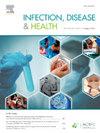Clinical presentation and antibiotic resistance trends of Escherichia coli isolated from clinical samples in South India: A two-year study (2022–2023)
IF 2
Q2 PUBLIC, ENVIRONMENTAL & OCCUPATIONAL HEALTH
引用次数: 0
Abstract
Background
Escherichia coli (E. coli) is a common pathogen responsible for various infections, particularly in healthcare settings. Its antibiotic resistance and susceptibility patterns are crucial for effective treatment. This study aims to assess the prevalence of E. coli in clinical samples and evaluate its antibiotic resistance patterns at SRM Medical Hospital and Research Center from 2022 to 2023.
Methods
A retrospective study was conducted using microbiological records from 30,838 clinical samples collected over two years. Positive E. coli isolates were identified and subjected to antimicrobial susceptibility testing. Demographic data, including age and sex, were analysed. Resistance patterns were assessed using the Vitek 2 system and disc diffusion methods as per CLSI guidelines.
Results
Out of 30,838 samples, 8694 yielded positive cultures, with 2597 E. coli isolates. Most isolates (69.6 %) were from urine, followed by exudate (20.4 %) and blood (6.8 %). E. coli infection was more prevalent in females (60.92 %) and individuals aged 41–70 years (48.97 %) (p < 0.001). High resistance was observed for amoxicillin-clavulanate (32 %) and ciprofloxacin (17.98 %), with high susceptibility to colistin (90.98 %) and piperacillin-tazobactam (90 %).
Conclusion
This study highlights the prevalence of E. coli, especially in urine samples and among females and older adults. High resistance to commonly used antibiotics emphasizes the need for regular susceptibility testing and antimicrobial stewardship.
Clinical Implication
This study emphasizes the need for ongoing antibiotic resistance monitoring and customized treatment strategies to combat E. coli infections. Future efforts should focus on enhancing antimicrobial stewardship programs to reduce the spread of resistant strains.
从南印度临床样本中分离的大肠杆菌的临床表现和抗生素耐药性趋势:一项为期两年的研究(2022-2023)。
背景:大肠杆菌(大肠杆菌)是一种常见的病原体负责各种感染,特别是在卫生保健机构。其抗生素耐药性和敏感性模式对有效治疗至关重要。本研究旨在评估2022 - 2023年SRM医院和研究中心临床样本中大肠杆菌的流行情况,并评估其抗生素耐药性模式。方法:回顾性研究了两年来收集的30,838份临床样本的微生物学记录。鉴定出阳性大肠杆菌并进行药敏试验。研究人员分析了人口统计数据,包括年龄和性别。根据CLSI指南,使用Vitek 2系统和椎间盘扩散方法评估抗性模式。结果:30,838份样本中,8694份培养阳性,分离出大肠杆菌2597株。尿液中分离最多(69.6%),其次是渗出液(20.4%)和血液(6.8%)。大肠杆菌感染在女性(60.92%)和41-70岁人群(48.97%)中更为普遍(p结论:本研究强调了大肠杆菌的患病率,特别是在尿液样本中,以及在女性和老年人中。对常用抗生素的高耐药性强调了定期进行药敏试验和抗菌药物管理的必要性。临床意义:本研究强调需要持续的抗生素耐药性监测和定制治疗策略来对抗大肠杆菌感染。未来的工作应侧重于加强抗菌素管理规划,以减少耐药菌株的传播。
本文章由计算机程序翻译,如有差异,请以英文原文为准。
求助全文
约1分钟内获得全文
求助全文
来源期刊

Infection Disease & Health
PUBLIC, ENVIRONMENTAL & OCCUPATIONAL HEALTH-
CiteScore
5.70
自引率
5.70%
发文量
40
审稿时长
20 days
期刊介绍:
The journal aims to be a platform for the publication and dissemination of knowledge in the area of infection and disease causing infection in humans. The journal is quarterly and publishes research, reviews, concise communications, commentary and other articles concerned with infection and disease affecting the health of an individual, organisation or population. The original and important articles in the journal investigate, report or discuss infection prevention and control; clinical, social, epidemiological or public health aspects of infectious disease; policy and planning for the control of infections; zoonoses; and vaccination related to disease in human health. Infection, Disease & Health provides a platform for the publication and dissemination of original knowledge at the nexus of the areas infection, Disease and health in a One Health context. One Health recognizes that the health of people is connected to the health of animals and the environment. One Health encourages and advances the collaborative efforts of multiple disciplines-working locally, nationally, and globally-to achieve the best health for people, animals, and our environment. This approach is fundamental because 6 out of every 10 infectious diseases in humans are zoonotic, or spread from animals. We would be expected to report or discuss infection prevention and control; clinical, social, epidemiological or public health aspects of infectious disease; policy and planning for the control of infections; zoonosis; and vaccination related to disease in human health. The Journal seeks to bring together knowledge from all specialties involved in infection research and clinical practice, and present the best work in this ever-changing field. The audience of the journal includes researchers, clinicians, health workers and public policy professionals concerned with infection, disease and health.
 求助内容:
求助内容: 应助结果提醒方式:
应助结果提醒方式:


